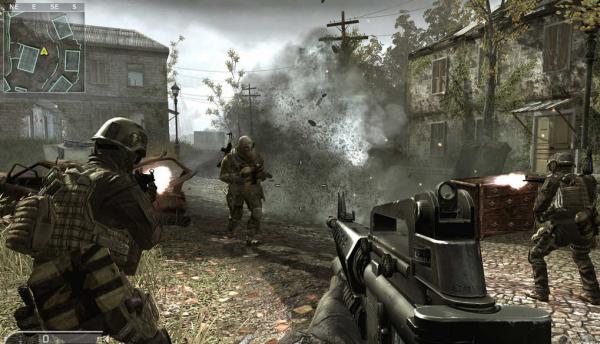
I missed the boat on the old black and white Ping systems, but caught pace quickly after the introduction of the Atari 2600. So I’ve been gaming on and off for the past 20+ years.
Do I think there is any measure of truth to the suggestion that violence in video games is bad for little kids?
The short answer: Of course!
It doesn’t take a Harvard graduate to know that 8-year-olds should not be spending their days carrying out acts of extreme digital violence. And anyone with a brain that checks in for duty would think twice about letting their kids play a game that depicts extremely vivid scenes of mayhem and killing, right?
As obvious as this would seem, some people clearly don’t get it.
But let’s stop right here so I can tell you what this article is NOT about. It’s absolutely, positively, without a doubt not about censoring video games or imposing laws that require game producers to make all of their content ‘family friendly’.
I’m an adult. I made that clear in the first line of this article.
If I want to turn on my game console and immerse myself in a three hour digital shoot-out that involves axe-wielding zombies, armored assault bots, and all manner of destruction and gore, that’s my right.
I ate my vegetables, went to bed on time, and watched my language for nearly 18 years. My days of behaving in a way that suits the moral agenda of others are over.
Having said all that let me get back to my original train of thought. Extremely violent video games are not suitable for young children.
And that’s why the video game industry has adopted the ESRB (Entertainment Software Ratings Board) ratings system. This system functions in much the same way as the ratings system used by the film industry.
A rightfully concerned parent need only flip a game case over to check the rating and determine whether or not it is appropriate for their child.
The ESRB rating system consists of two user-friendly parts. These are the actual rating, and a brief description of the content.
Standard ratings used by the ESRB are:
EC: Early Childhood
E: Everyone
T: Teen
M: Mature 17+
AO: Adults Only 18+
Many retailers have guidelines in place that require employees to check the ID of individuals purchasing games with higher ratings.
The content descriptions set forth by the ESRB serve to explain the ratings. Examples of content descriptions are Blood and Gore, Language, Nudity, Mature Humor, etc.
So there is frankly little excuse for the children of America getting their hands on inappropriate video game content, as long as their parents are at least somewhat interested in the types of games they are playing. It’s clear enough that young people are best left unexposed to certain types of content, so instead of pointing a finger at the game producers and trying to shrug off the responsibility of being parents/caregivers, I’d like to see more people use the ratings system correctly and eliminate potential problems before they start.
Source : ICC Cricket World Cup 2011 Free Download
ConversionConversion EmoticonEmoticon